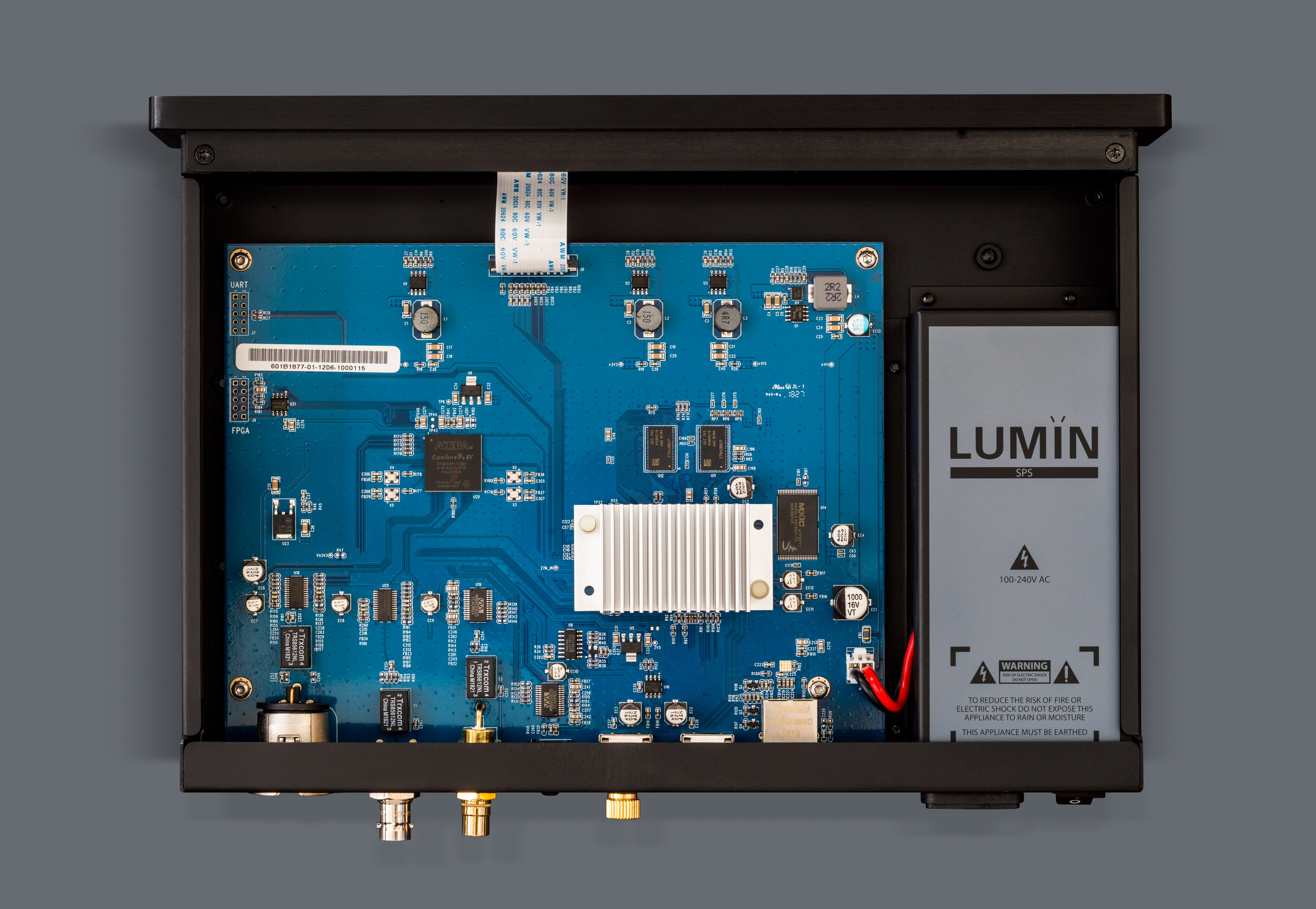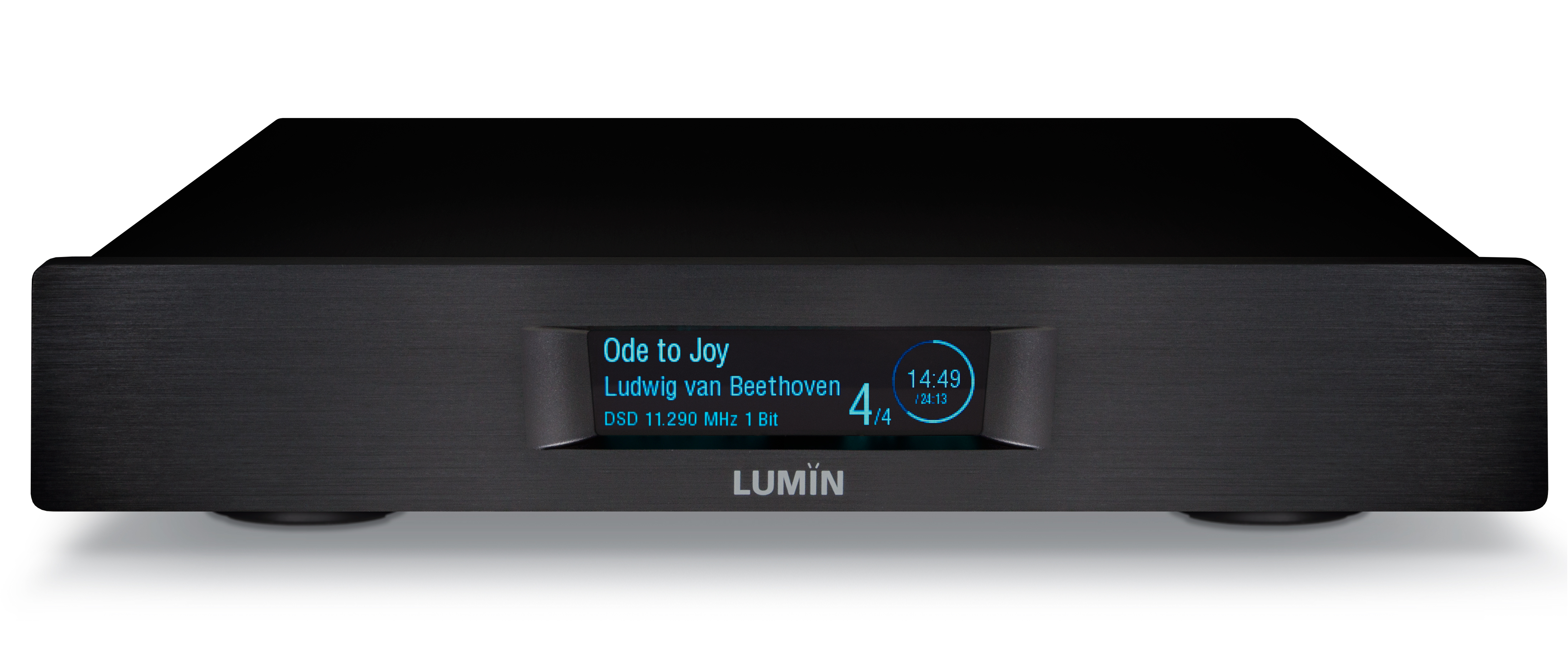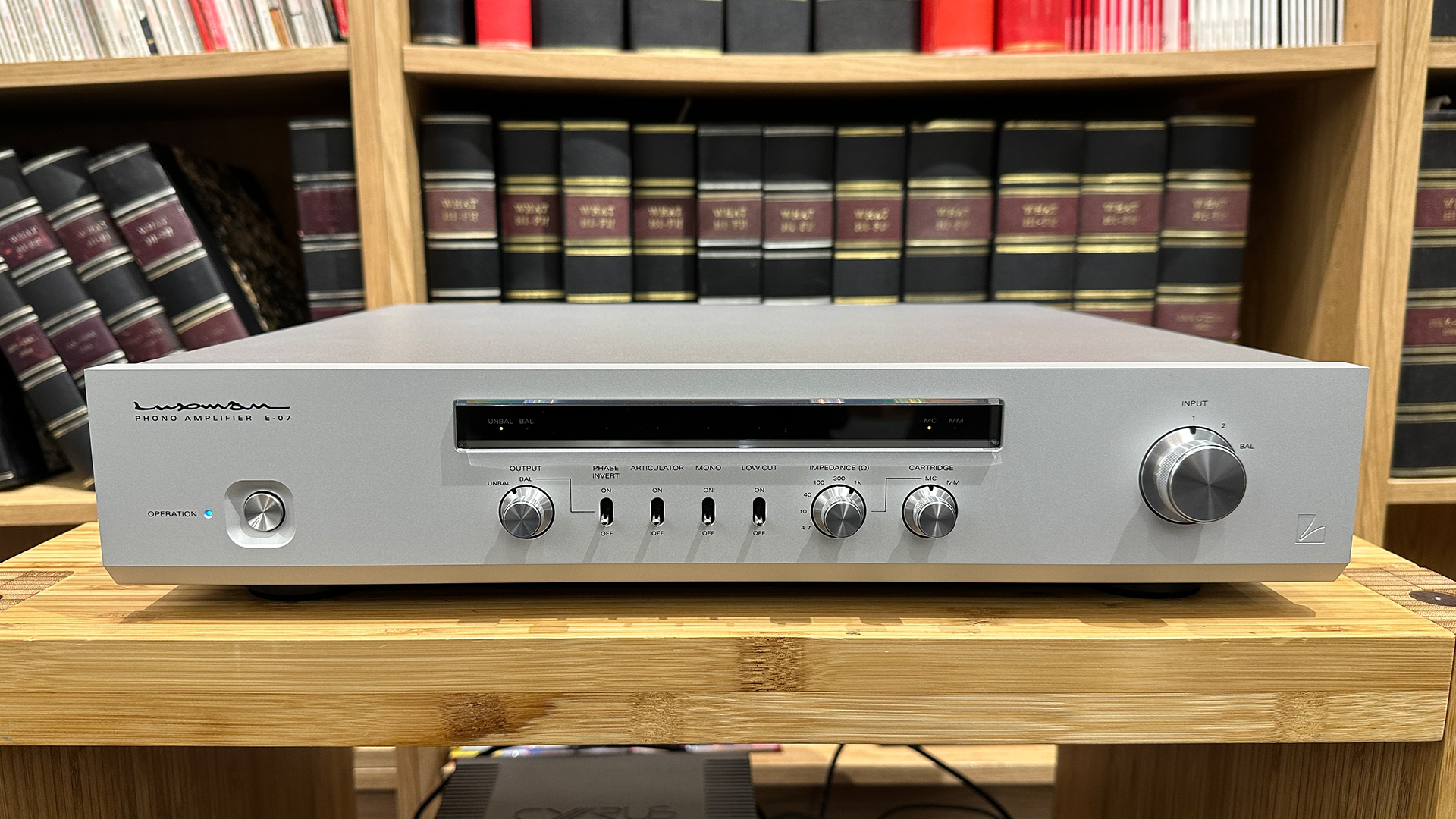What Hi-Fi? Verdict
Considering that this is essentially a Lumin U1 in a less-premium housing and for a third of the price, this compact music streaming box is absolutely worth its asking price, and its intuitive app makes up for its lack of manual.
Pros
- +
Superb execution
- +
Flawless sound
- +
Fantastic app
Cons
- -
No user manual
- -
Exclusively app-controlled
- -
Not as flash as other Lumins
Why you can trust What Hi-Fi?

This review and test originally appeared in Australian Hi-Fi magazine, one of What Hi-Fi?’s sister titles from Down Under. Click here for more information about Australian Hi-Fi, including links to buy individual digital editions and details on how to subscribe.
Lumin has not only garnered huge support from audiophiles right around the world in the relatively brief time its components have been available, but it’s also expanded its range dramatically so that it now caters for almost all applications and covers all price-points.
That’s all been made possible largely because the company behind Lumin is the famous Hong-Kong-based electronics firm Pixel Magic.
If you think you’ve heard of it but can’t place the name, it might be because you remember that it developed the world’s first Linux-based video processor, or maybe because you once owned a MagicTV HDTV receiver (which it designed and built).
As for why the company is able to release new products so rapidly, this is partly because rather than relying on freelance designers and external factories Pixel Magic has its own team of highly-experienced digital engineers, and it builds its Lumin-branded products in its own factory in China. But it’s also in part because it uses the same software throughout its range, as well as much of the same hardware and circuitry.
And when I say ‘much of the same hardware’, the U1 Mini is a perfect example, because it uses almost exactly the same circuitry as the Lumin U1. Indeed the only differences between the U1 and the U1 Mini of which I am aware, other than, of course, the size, is that the U1 has a very large external linear power supply whereas the U1 Mini’s power supply is a compact switch-mode type that’s actually built inside the chassis.
And of course the chassis itself is also different, because whereas the full-sized U1 has Lumin’s ‘classic’ chassis, which is CNC-routed out of solid aluminium, the chassis of the U1 Mini is simply a sheet of aluminium that’s been folded and then anodised (in either silver or black). That said, it still looks very classy… but it’s clearly not the same standard as Lumin’s premium chassis.
Equipment
Just in case you were wondering, a ‘Network Music Player’ (or an ‘Audiophile Network Music Player’, as Lumin calls the U1 Mini) is a device that finds music that’s stored on your Home Network or available from a streaming internet service via your Home Network and converts it to a digital signal. That’s pretty much it. So you still need to use an external DAC to convert that signal to analogue, then an amplifier and speakers to reproduce it in your listening room.
The latest hi-fi, home cinema and tech news, reviews, buying advice and deals, direct to your inbox.
If you don’t use one of the many streaming music services available (Spotify, Tidal, Qobuz, etc) I’d recommend you store your music on a dedicated Network Attached Storage device (NAS). If you do this, you should have a Media Server enabled, and if you’re using a Lumin U1 Mini, I’d recommend using one called MinimServer, not because it’s particularly good (though it certainly is this) but because Lumin uses it to develop its software and therefore it supports all the features of the U1 Mini.
As for the NAS drive itself, there are lots of very good ones available but again I’d recommend you use one made by either QNAP or Synology, firstly because MinimServer provides excellent installation support for both these brands, but also because Lumin itself is able to provide far more extensive and detailed on-line technical support when you use either of these two brands.
The U1 Mini doesn’t come with any form of hardware controller. Lumin instead provides an app that you’ll need to load onto either an Apple iPad or iPhone, or onto an Android device (preferably a tablet, because the larger screen size makes control easier). And when I say you will ‘need’ to load the app, it’s actually compulsory: you can’t use the U1 Mini if you don’t have the app loaded.
Having been bitten in the past by an app-controlled product for which the app later ‘disappeared’ I am a bit twice-shy about products that are exclusively app-controlled. I’d like it better if Lumin had an alternative control system available.
Getting the U1 Mini up and running should be dead easy, because it really involves just connecting it via the Ethernet port on its rear panel to your home network’s router, plugging the power cord into a 240V socket and then starting up the Lumin app. The App will then automatically detect both the MinimServer and the U1 Mini (and your computer if it’s on the same network, which I’d expect it would be), after which your music library will load and you’re in business… always assuming that you’ve already connected your DAC, amplifier and speakers, of course!

Connecting a DAC is made pretty easy, because as you should be able to see from the photo of the Lumin U1 Mini’s rear panel, there’s a sextet of them to choose between: AES/EBU, BNC, RCA, Optical, and two USB.
You might also be able to see from that photo that although all these outputs (along with the Ethernet jack and the 3-pin mains power socket) are fixed directly to the rear panel, the top and sides of the aluminium case overhang this panel by 32mm. This means that you could, if you wished, place the U1 Mini in quite an open area yet have no visible wiring if you ran the wires down into holes cut into the surface of which it was resting. I rather like this design, even though it can make the plugs a tad difficult to insert.
If anything does go awry, the fact that you’re using components recommended by Lumin will make it really easy for the hi-fi dealer that sold you the U1 Mini to sort things out. Of course, if you’re at all bothered by the technology, it would make sense for your hi-fi dealer to install everything you’ll need and get it up and running for you, after which you’ll find that using the system to play music will be as easy as falling off a log.
As I suggested earlier, the The U1 Mini can connect directly to Spotify and supports Tidal but what I didn’t mention is that it’s also Roon Ready and supports MQA from TIDAL and Qobuz... and in high-res too, if that’s what you’d prefer.
Another feature of the Lumin U1 Mini (though actually, it’s a feature that’s now available for all Lumin products) is that you can now control volume using an innovative new digital volume adjustment algorithm called Leedh Processing that was developed by French designer Gilles Millot, of Acoustical Beauty. Leedh Processing allows volume control in the digital domain, prior to conversion to analogue, without any of the drawbacks that plague other digital volume controls.
Gilles claims that his Leedh Processing algorithm modifies the digital signal amplitude exactly, without any changes to its shape, and with absolutely no loss of information, plus it also uses whole number volume values to maintain audio information integrity during subsequent digital-to-analogue conversion.
But if you’re old-school, and would prefer to control volume via analogue means, you can switch the Leedh Processing off: Lumin doesn’t force it on you.
In order to enable super-smooth scrolling through your music library, the Lumin App caches all your album art on your device. So the larger your music library, the more memory space you’ll need, but the upside of this memory consumption is that your album art will pop-up on-screen instantly. Also, you can have up to forty images on-screen, which is great for quickly finding an album whose name you can’t quite put your finger on.
And if you can’t visually deal with 40 images on-screen at the same time, you can adjust the actual number that will be displayed during scrolling all the way down to just the one if you wish.
The Lumin App is fantastically intuitive and easy to use, which is just as well, because there is no manual for it, nor is there one for the Lumin U1 Mini itself. Despite this ease of installation, and ease of use, I’d personally still like to have manuals for both please. But perhaps now it’s me that’s being too old-school.
Basically, there isn’t much that you can’t do with the Lumin App. You can arrange your music library by album title, track title, artist, composer, genre, and lots more. You can even order your library by the date and time you added the particular piece of music if you want. You can also use the app to edit track or album information.
Indeed it might be the problem of explaining the myriad things that you can do with the app that made Lumin baulk at writing a manual for it in the first place. It’d be a difficult task.
As you’d expect, you can get the Lumin app to search through your library for you for a particular work or works, with the Lumin App offering two methods of doing this: ‘Find’ and ‘Filter’.
The ‘Filter’ mode is essentially just a standard Search function. The ‘Find’ mode, on the other hand, steps through your music library and finds every instance of whatever word you typed in, so if you search for a common word, it can take rather a long time. There’s probably a better way of searching via the App, but I couldn’t find it and, like I said, there’s no manual to consult.

Once you start playing an album, you won’t fail to be impressed by the sound quality from the Lumin U1 Mini. On Sarah Brightman’s album Harem, for example, I have found that if the digital conversion is not handled properly, it’s very easy to think that she’s singing “Hold my hand, I’m a strange-looking parasite” when in fact the line is actually “Hold my hand, I’m a stranger in paradise.” As rendered by the Lumin U1 Mini, there was never any shadow of a doubt what she was singing: the reproduction… and diction… were absolutely perfect.
When I played the late Eva Cassidy’s Eva By Heart via the Lumin U1 Mini, the sound of Eva’s guitar seemed more authentically natural than I have previously heard it sound, and the U1 Mini was absolutely ruthless in exposing the differences in sonic quality between the keyboard cellos and Dan Cassidy’s live violin.
But the bass… oh the bass! The Lumin U1 Mini reproduced the very deepest organ notes pitch-perfectly and with true authority. Further up in the spectrum I found the sound of kick-drum was similarly impressive, always hearing an instant transient, with no pre-echo, and the sound never lasted longer than the strike. I assessed the tonal quality of the bass and low mids using cello works, mostly Bach’s Cello Suites, which I own as performed by both Pablo Casals and Yo Yo Ma.
The Lumin U1 Mini painted both artists in their best light, but at the same time allowed me to easily differentiate between them, so I was always able to instantly recognise which of the two was playing.
On Jackson Browne’s Naked Ride Home, the drummer’s obvious passion for his cymbals means there’s a surfeit of high-frequency energy, yet the Lumin U1 Mini was still able to let me hear the wind chimes behind, which it reproduced with life-like clarity, delicacy and realistic harmonics and decay.
Final verdict
The Lumin U1 Network Music Player retails for AUS$9,900 (£4795, $US5900). The Lumin U1 Mini Network Music Player retails for AUS$3,290 (£1695, $US2000). Need I say more?
Australian Hi-Fi is one of What Hi-Fi?’s sister titles from Down Under and Australia’s longest-running and most successful hi-fi magazines, having been in continuous publication since 1969. Now edited by What Hi-Fi?'s Becky Roberts, every issue is packed with authoritative reviews of hi-fi equipment ranging from portables to state-of-the-art audiophile systems (and everything in between), information on new product launches, and ‘how-to’ articles to help you get the best quality sound for your home.
Click here for more information about Australian Hi-Fi, including links to buy individual digital editions and details on how best to subscribe.


